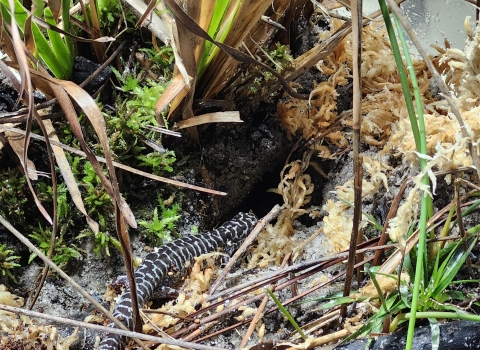mso-paginationHagerman National Wildlife Refuge, on the southern shores of Lake Texoma, is planning for its future and is seeking community input into the goals that will guide the refuge for the next 15 years.
The U.S. Fish and Wildlife Service drafted a Comprehensive Conservation Plan for the refuge (CCP) and is seeking public input. An open house will be held Thursday, November 17 at the Hagerman National Wildlife Refuge Visitor Center, from 11 a.m. to 7 p.m. for people to meet with Service personnel to discuss and share any ideas, thoughts and concerns on the draft.
To reach the refuges visitor center from Dallas, go north on Highway 75 to Sherman FM 1417 exit, then north 13 miles on FM 1417 to refuge sign and left 6 miles to entrance. From U.S. 82, turn north on Southmayd Road (4 miles east of Sadler and 7.5 miles west of Sherman). Follow signs to office and visitor center. For information, call 903/786-2826.
The CCP formalizes management goals, long-range objectives, and strategies for achieving refuge purposes. The refuge was established for birds migrating through the central part of the United States and is 11,320 acres of croplands, uplands and marshes which provide important habitat for more than 316 species of birds and other wildlife.
The CCP was prepared over several years with help from local, state and federal agencies, as well as many concerned private citizens. Written comments and suggestions on the draft CCP will be accepted through November 28.
Specific objectives for realizing the CCP management goals include the following: continuing to monitor population status of resident and migratory birds and other wildlife; expansion of refuge biological program; maintaining native grasslands and reestablishing disturbed refuge lands; continuing to produce forage crops for migratory birds; improving the efficiency of water management to maintain refuge wetlands and sustain agricultural practices; enhancing recreational activities and increasing educational programs; increasing outreach to develop a broader base of public support and community involvement; strengthening partnerships with other government, non-governmental organizations and private groups. The goals and objectives of the CCP will be revisited and updated every 15 years, or more often, if conditions warrant.
Copies of the CCP will be distributed at the open house or may be obtained in advance by contacting: Yvette Truitt-Ortiz, Natural Resource Planner, Division of Planning, National Wildlife Refuge System, Southwest Region, U.S. Fish and Wildlife Service, P.O. Box 1306, Albuquerque, NM 87103-1306; voice (505) 248-6452; fax (505) 248-6874.
The National Wildlife Refuge System, begun in 1903, encompasses lands nationwide that are protected and managed by the Service specifically for wildlife. Refuges promote wildlife diversity and protect wildlife habitat and natural systems, like wetland habitats, that serve us by holding flood waters, filtering pollutants and cleaning our water. More than 35 million Americans visit national wildlife refuges each year.
The U.S. Fish and Wildlife Service is the principal Federal agency responsible for conserving, protecting and enhancing fish, wildlife and plants and their habitats for the continuing benefit of the American people. The Service manages the 95-million-acre National Wildlife Refuge System, which encompasses 544 national wildlife refuges, thousands of small wetlands and other special management areas. It also operates 69 national fish hatcheries, 64 fishery resources offices and 81 ecological services field stations. The agency enforces federal wildlife laws, administers the Endangered Species Act, manages migratory bird populations, restores nationally significant fisheries, conserves and restores wildlife habitat such as wetlands, and helps foreign and Native American tribal governments with their conservation efforts. It also oversees the Federal Assistance program, which distributes hundreds of millions of dollars in excise taxes on fishing and hunting equipment to state fish and wildlife agencies.
-http://southwest.fws.gov-


